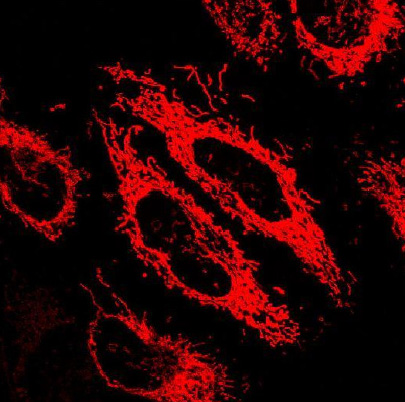Research Highlights Links between Metabolism and Cancer Cell Death
Posted on: 15 September 2011
Postgraduate student in the School of Biochemistry and Immunology, Stephen Quinn, presented his research findings to an audience of leading scientists in the field of mitochondrial function and disease at the international Mitochondrial Physiology Conference held recently in Bordeaux.
Mitochondria are organelles inside cells that synthesise the majority of energy-related molecules in the body into fuel for the cell’s activities. Mitochondria are also involved in other cell processes such as cell division and growth, cell death, and a range of human neurodegenerative and cancer disorders. Stephen’s research, entitled ‘Perturbation of mitochondrial fusion rates by OXPHOS inhibitors in HeLa cells respiring on galactose’, specifically focuses on mitochondrial fusion and fission dynamics in the HeLa cancer cell line.

Mitochondria
Speaking about the significance of the research, Associate Professor in Neuroscience and Stephen’s PhD supervisor, Dr Gavin Davey said: “There has always been a central role for metabolism in disease but understanding how complex metabolic pathways control or give rise to abnormal cell behaviour has been difficult. Recently there has been an explosion of interest in how metabolism controls things like programmed cell death, cancer, neurodegeneration, diabetes and immunological responses and Stephen’s work contributes to this development.”
Cancer cell lines are notoriously difficult to kill and seem to have different mitochondrial and bio energetic function to other cells, enabling them evade cell death processes. In his research, Stephen discovered that by varying the sugar supply to cancer cells it is possible to change their mitochondrial fusion and fission rates, rendering them much more susceptible to cell death.
Dr Davey continued: “Stephen’s work has linked some classical biochemical metabolic pathways, the Warburg effect and the Leloir pathway, to mitochondrial dynamics in cancer cells. The work involved developing techniques in the Microscopy and Imaging Centre at the School of Biochemistry and Immunology and spending quite a lot of time performing live cell imaging studies.”
The work is supported by IRCSET under the PRTLI development programme.
